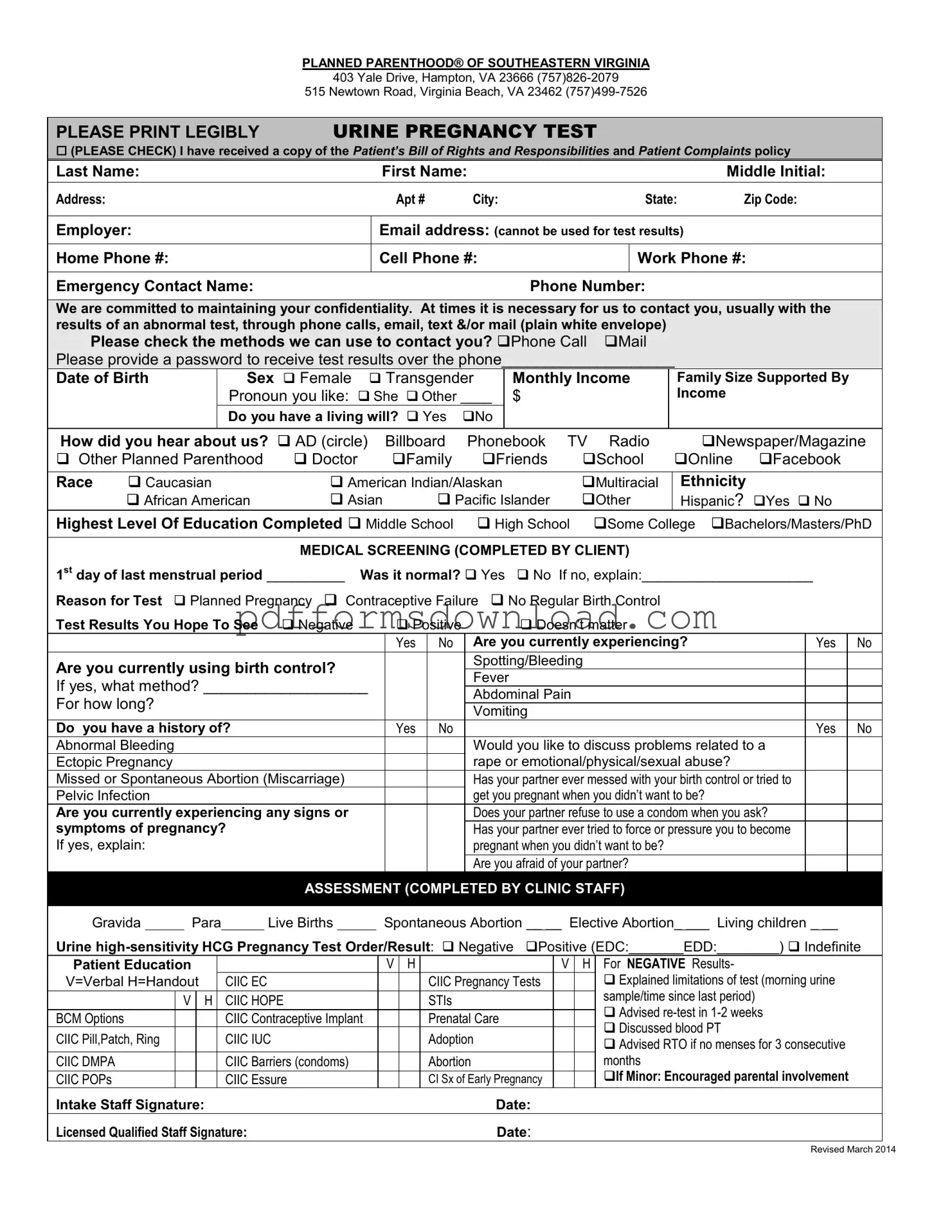What is the Planned Parenthood Proof form used for?
The Planned Parenthood Proof form is primarily used for patients seeking medical services, particularly urine pregnancy tests. It collects essential information about the patient, including personal details, medical history, and preferences for communication regarding test results. This form ensures that the clinic can provide appropriate care while maintaining patient confidentiality.
How do I complete the Planned Parenthood Proof form?
To complete the Planned Parenthood Proof form, you should print legibly and fill in all required fields. This includes your name, address, contact information, and details about your medical history, such as the first day of your last menstrual period and any current symptoms. It’s important to answer questions honestly to ensure you receive the best possible care. If you have any questions while filling out the form, don’t hesitate to ask the clinic staff for assistance.
What should I do if I have concerns about privacy while filling out the form?
Privacy is a top priority at Planned Parenthood. The form includes a section that outlines how your information will be used and protected. If you have specific concerns about confidentiality, you can discuss these with the clinic staff before or while completing the form. They can explain the measures in place to protect your personal information and ensure that your health details are kept confidential.
Can I receive my test results over the phone?
Yes, you can receive your test results over the phone. However, you will need to provide a password on the form for this purpose. This password helps ensure that your results are shared only with you. You can also choose other methods of communication, such as mail, if that is your preference.
What if I need assistance with language or understanding the form?
If you require assistance with language or have difficulty understanding any part of the form, it's important to let the staff know. Planned Parenthood offers interpretive services, although they may not always be immediately available. The staff will work with you to ensure that you understand all the information provided and can make informed decisions about your care.
